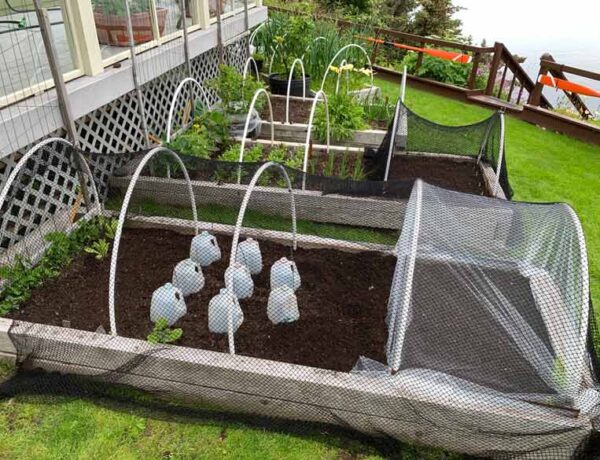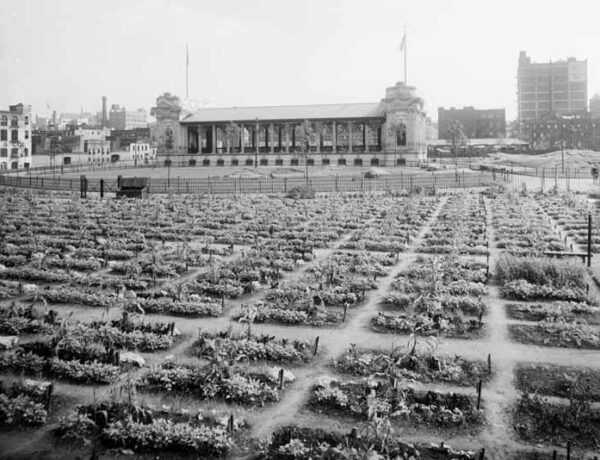When the weatherman predicts that the sun will come out, my camera often stays in. Why? Bright sunny days are great for picnics, hiking, and putzing in the garden. But they’re not so great for taking pictures of plants and people outside. Give me an overcast day and my camera and I are happy campers.
[perfectpullquote align=”full” bordertop=”false” cite=”” link=”” color=”” class=”” size=””]On a bright day, the sun is both your best friend and worst enemy.[/perfectpullquote]
It provides buckets of light, this is true, but it also turns your photos into high contrast scenes with extremely bright and dark areas. For example, under a ball cap or the eyes of a bear, sunk back in deep eye sockets.
Here are seven of my favorite tips that will help you make the best of your garden photography in a sunny situation.
Whether you use a smartphone or a DSLR camera, these tips will ensure that the sun will always be your friend…
Garden photography tip #1: When it comes to light, softer is better
[perfectpullquote align=”full” bordertop=”false” cite=”” link=”” color=”” class=”” size=””]Contrary to popular belief, a beautiful day doesn’t automatically make beautiful photos.[/perfectpullquote]
This is probably one of the biggest misconceptions that people have about photography. For example, when light reflects off shiny delphinium leaves it creates distracting shiny spots.
Where there’s light, there’s dark. I mentioned a ball cap earlier. Ever snapped a photo of someone on a bright sunny day only to find their nose and eyes disappear in ball cap shadows?
Fog and cloudy days on the other hand generate soft, even light that is pleasing for taking pictures of flowers, people, birds, and animals. But hey, what if the blue poppies you’ve been waiting for all season are in their prime right now, and cloudy skies are forecasted? Where there’s a will there’s a way to get around the sunshine.
[Hi, Marion here. This article was originally published in the Kodiak Daily Mirror, the hometown newspaper for Kodiak, Alaska. Go here to access the archive page for the list of my past columns, written each week since 1986].
Seven ways to make the best of a bright situation
1) Timing is everything
The easiest solution to extreme lighting is to simply avoid the midday sun. It might seem counter-intuitive, by try taking your pictures in the early morning or the dusky hours of evening.
2) Wait for good light
Since the diffused light of an overcast sky or hazy sunlight is ideal, it’s worth waiting for the right light. As I mentioned, overcast days provide the best lighting for portraits and close-ups of flowers. If it’s partly cloudy outside, simply wait for a cloud to pass in front of the sun.
3) Bring in the clouds
But what if you can’t wait for the clouds to roll in? Take charge and create overcast conditions. For example, let’s say you’re photographing wildflowers on Near Island’s south end trail. It’s high noon and the light is harsh. To soften the bright sunlight that’s striking your subject, hold a “diffuser” such as wax paper or a white garbage bag between the flower and the sun. Then take your picture.
Your assignment: When using a diffuser, take a photo with the diffuser and one without, just to prove it to yourself. You’ll be amazed at the difference. For larger subjects, read on to learn what Sport Illustrated photographers do to solve sunny situations…
4) Flash it!
Adding just a kiss of light with flash is a great way to brighten up some of the shadows areas. This is called “fill flash” and it’s a function on almost all cameras and smartphones. You can also lighten shadowy areas when processing your photos…
5) Reflect it!
Back to Sports Illustrated. Have you ever seen their swimsuit editions? If you were to attend one of their photo shoots you’d see people holding up giant white reflectors to bounce light back onto the models. Soft, lovely, sweet light.
So if you don’t have flash or if your battery is running low (flash sucks up a lot of battery power), bring on the reflectors. Sheets, white walls, aluminum foil, white foam core – even a white t-shirt is enough to brighten up a flower. Believe me, this simple trick creates amazing results.
6) Backlight for a dramatic look
To set up a shot, many how-to photography books recommend placing the sun at your back. This is a worthy guideline, but for the sake of exploring artistic expression, let’s break this rule of thumb. For example, one way to make a field of wildflowers really glow, is to take a picture of them when they’re backlit — that is, with the sun facing you and shining through the flowers.
Experiment with a variety of exposures to create a range of effects, from beautiful silhouettes to a stained-glass look. This is especially noticeable with translucent fabrics or flower petals like poppies, nasturtiums, and pansies.
7) Last, but not least
Photography isn’t worth the effort unless you are enjoying yourself and making images that please you. To accomplish this, know how to use your camera equipment, your apps, whatever. Every summer I conduct a dozen or so photography workshops and I can’t tell you how many times visitors have come to Kodiak for a once-in-a-lifetime trip with a new camera that they just unboxed.
As for shooting on sunny days, experiment with the light that has been handed to you. No excuses! Experiment with various diffusers and reflectors. Play. Get down on your belly and shoot through flowers and branches. Capture children playing at the beach or on the playground. And one thing about photographing kids: DON’T say cheese! A natural pose is sweeter than a stilted smile when they are broken away from say, building a sandcastle.
[perfectpullquote align=”full” bordertop=”false” cite=”” link=”” color=”” class=”” size=””]Finally, be brutally honest with yourself when critiquing your photos. Ask yourself, “How can I improve?” And have fun.[/perfectpullquote]
I hope you enjoyed found today’s garden photography column helpful. What is your favorite thing to photograph? Drop me a note in the comments below.
Peas on earth,

+++++++
PS Imagine cutting your garden maintenance in half. Help your plants survive a drought. Make weeds easier to pull. After 35 years of gardening, I have learned one important thing: Compost is the answer to all your problems. Want to know how to make compost in just 6 weeks? Begin by taking this composting assessment. And hey, you might enjoy my Joy of Composting Facebook page. If you’d like to drop me a note, here’s my email address: marion (at) marionowenalaska.com.





1 Comment
Annette Neudorf
September 24, 2021 at 9:11 PMI love photographing clouds, sunsets, mushrooms, lichens and any plants on the forest floor.